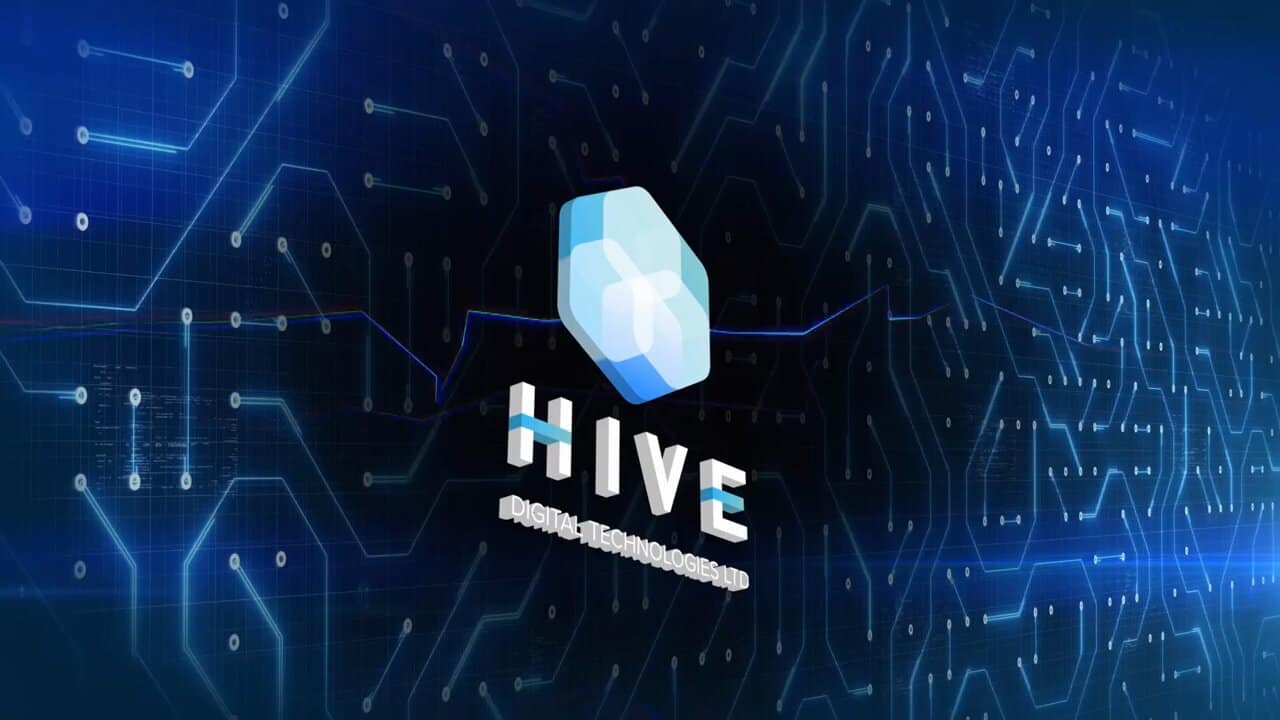
Wind energy harnesses the power of wind to generate electricity. Here’s an explanation of how wind energy works.
How Wind Turbines Work
Wind turbines are remarkable structures that harness the power of the wind to generate electricity. They consist of several key components and operate based on fundamental principles of physics.
At the heart of a wind turbine is a large rotor with multiple blades. The number of blades can vary, but most modern turbines have either two or three. These blades are designed to capture the kinetic energy present in the wind.
When the wind blows, it causes the blades to rotate. The force and speed of the wind determine the rotational speed of the blades. This rotational motion is transferred to a central shaft connected to a generator.
The generator, typically located in the nacelle, converts the mechanical energy from the rotating blades into electrical energy. It uses electromagnetic induction to produce electricity, similar to how a bicycle dynamo generates power.
The electricity produced by the generator is initially in the form of alternating current (AC). To make it suitable for distribution through power grids, it undergoes a process called power conversion. Power electronics within the turbine’s control system convert the AC into direct current (DC) and then back into AC at the desired voltage and frequency.
Wind turbines are usually installed in wind farms, where multiple turbines are situated together to maximize energy generation. The turbines are strategically placed in locations with consistent and strong winds to optimize their efficiency.
Wind farms are connected to a power grid, allowing the generated electricity to be transmitted and distributed to consumers. Excess electricity can be stored in batteries or fed back into the grid for use during periods of low wind or high demand.
Maintenance and monitoring are crucial for the optimal performance of wind turbines. They are equipped with sensors and control systems that monitor various parameters, such as wind speed, direction, and turbine performance. This data helps operators analyze and adjust the turbines to maximize energy production.
Wind turbines are considered a clean and renewable energy source, as they do not produce greenhouse gas emissions or air pollution during operation. They contribute to reducing reliance on fossil fuels and combating climate change.
As technology advances, wind turbines continue to evolve, becoming larger, more efficient, and capable of capturing energy from lower wind speeds. They play a vital role in the transition to a sustainable energy future, harnessing the power of the wind to generate clean electricity for communities around the world.
How Wind Capture Works
Wind capture, in the context of wind energy, is the process by which the kinetic energy of the wind is harnessed to generate electricity. Here’s an explanation of how wind capture works:
When the wind blows, it possesses kinetic energy due to its motion. Wind turbines are designed to capture this energy and convert it into usable electrical power.
The key element of wind capture is the rotor, which consists of large blades mounted on a hub. These blades are strategically shaped and angled to efficiently capture the force of the wind.
As the wind flows across the blades, it creates a pressure difference between the front and back sides of each blade. This pressure difference results in a lift force, similar to how an airplane wing generates lift. The lift force causes the blades to start rotating.
The rotor is connected to a central shaft, which is linked to a generator housed within the turbine. As the blades rotate, they transfer their rotational motion to the generator through a system of gears.
Inside the generator, the mechanical energy is transformed into electrical energy. This conversion occurs through the principle of electromagnetic induction. The rotation of the shaft induces a magnetic field within the generator, causing electrons to move and generate an electric current.
The electrical energy produced by the generator is typically in the form of alternating current (AC). To make it suitable for distribution through power grids, it may undergo power conversion processes to adjust the voltage and frequency.
Wind turbines are carefully positioned in locations with favorable wind conditions, such as open fields or coastal areas, to maximize their capturing efficiency. Factors like wind speed, direction, and turbulence are considered when determining optimal turbine placement.
Monitoring and control systems are often employed to ensure the turbines operate at peak performance. Sensors and data analysis help adjust the turbine’s position, blade angle, and other parameters to optimize energy capture and maintain safe operation.
Wind capture is an essential process in harnessing the renewable and clean power of the wind. By effectively capturing and converting the kinetic energy of the wind into usable electricity, wind turbines contribute to sustainable energy generation and help reduce dependence on fossil fuels.
How does a wind turbine generate mechanical energy
A wind turbine generates mechanical energy through a fascinating interplay of physics and engineering.
At the heart of a wind turbine is a rotor, which consists of large blades that are carefully designed to capture the energy of the wind. When the wind blows, it imparts a force on the blades, causing them to move.
As the wind flows across the blades, it creates a pressure difference between the front and back sides of each blade. This pressure difference generates a lift force, similar to how an airplane wing generates lift. The lift force acts perpendicular to the wind direction and causes the blades to start rotating.
The rotating blades are connected to a central shaft. This shaft is linked to a gearbox, which increases the rotational speed of the blades to a level suitable for efficient power generation.
The gearbox, in turn, is connected to a generator. The rotation of the blades transfers mechanical energy to the generator through the gearbox. The generator consists of a rotor and a stator. As the rotor spins, it creates a rotating magnetic field, which induces an electric current in the stator through electromagnetic induction.
This process of electromagnetic induction converts the mechanical energy from the rotating blades into electrical energy. The generated electricity is typically in the form of alternating current (AC).
The electrical energy produced by the generator is then further processed and transformed to the appropriate voltage and frequency for transmission and distribution through power lines. This ensures compatibility with the electrical grid and enables the electricity to be used by consumers.
The generation of mechanical energy in a wind turbine is a result of the wind’s force acting on the specially designed blades, which subsequently drives the rotation of the turbine’s components. Through the conversion of mechanical energy to electrical energy, wind turbines play a vital role in the production of renewable and sustainable electricity.
Power Generation in wind energy
Power generation in wind energy involves the conversion of the kinetic energy present in the wind into usable electrical energy. This process relies on the operation of wind turbines and follows a series of steps.
When wind blows, it possesses kinetic energy due to its motion. Wind turbines are designed to capture this energy and initiate power generation.
The primary component of a wind turbine is the rotor, which consists of large blades mounted on a hub. These blades are aerodynamically shaped to efficiently capture the force of the wind.
As the wind flows across the blades, it creates a pressure difference between the front and back sides of each blade. This pressure difference generates a lift force, causing the blades to start rotating.
The rotor is connected to a central shaft, which is linked to a generator housed within the turbine. As the blades rotate, they transfer their rotational motion to the generator through a system of gears or a direct drive mechanism.
Within the generator, the mechanical energy from the rotating shaft is converted into electrical energy through the principle of electromagnetic induction. The rotation of the shaft induces a magnetic field, which in turn generates an electric current in the generator’s coils.
The electrical energy produced by the generator is typically in the form of alternating current (AC). However, it may undergo power conversion processes to adjust the voltage and frequency for compatibility with the electrical grid or consumer requirements.
Wind turbines are often connected in wind farms, where multiple turbines work together to generate a significant amount of electricity. These wind farms are strategically located in areas with consistent and strong winds to optimize power generation.
Monitoring systems are employed to assess wind conditions, turbine performance, and power output. This data helps operators analyze the efficiency of the turbines and make any necessary adjustments for optimal power generation.
The generated electricity is then transmitted through power lines and integrated into the existing electrical grid for distribution to consumers. Excess electricity can be stored in batteries or used to offset the power demand during periods of low wind.
Power generation in wind energy plays a vital role in the transition to sustainable and renewable sources of electricity. By harnessing the power of the wind, wind turbines provide a clean and renewable energy option that reduces reliance on fossil fuels and contributes to a greener future
How do wind turbines connect to the power grid?
Wind turbines connect to the power grid through a process called grid integration. This involves establishing a physical and electrical connection between the wind turbines and the existing power transmission infrastructure.
The connection starts with the wind turbine’s generator, which produces electrical energy. This energy is typically generated as alternating current (AC) within the wind turbine.
To connect the wind turbine to the power grid, a step-up transformer is used. The transformer increases the voltage of the generated electricity to a level suitable for transmission over long distances.
Once the voltage is stepped up, the wind turbine is connected to a substation. The substation acts as an interface between the wind farm and the power grid. It allows for the smooth integration of the wind farm’s electricity into the existing grid infrastructure.
At the substation, the electricity from multiple wind turbines is combined and synchronized with the grid’s voltage and frequency. This synchronization ensures that the wind farm’s electricity is in harmony with the power grid’s operation.
The substation also contains protective equipment, such as circuit breakers and relays, which monitor and safeguard the electrical system. These devices help isolate and disconnect the wind turbines in case of faults or abnormal conditions.
From the substation, the wind farm’s electricity is transmitted through high-voltage power lines, also known as transmission lines. These transmission lines transport the electricity over long distances to distribution centers or directly to consumers.
At the distribution centers, the voltage is stepped down through transformers to levels suitable for distribution to households and businesses. The electricity is then further distributed through the local power grid, reaching end-users.
Grid operators monitor the overall power grid and manage the balance between electricity supply and demand. They ensure the efficient and reliable integration of wind energy into the power grid by adjusting generation and load requirements as needed.
By connecting wind turbines to the power grid, the electricity generated from wind energy can be efficiently distributed to meet the needs of consumers, contributing to a more sustainable and diversified energy mix.
How does the Monitoring and Control of wind turbines work?
The monitoring and control of wind turbines involve sophisticated systems and technology to ensure their efficient operation and performance. At the heart of this process is the Supervisory Control and Data Acquisition (SCADA) system, which serves as the central control hub for monitoring and managing the turbines.
Through a network of sensors placed strategically within the turbines, various parameters such as wind speed, wind direction, temperature, vibration, and electrical output are continuously measured. This data is collected and transmitted to the SCADA system in real-time, providing operators with valuable insights into the turbine’s operational status.
Operators remotely access the SCADA system from a control center, allowing them to monitor the turbine’s performance, power output, rotor speed, and overall system health. They can detect any abnormalities or deviations from expected behavior and promptly address any issues that may arise.
To optimize performance, the SCADA system enables operators to adjust operational parameters. By analyzing the collected data and employing sophisticated algorithms, operators can fine-tune the turbine’s settings, such as blade pitch and turbine yaw, to maximize energy production based on prevailing wind conditions.
The SCADA system also incorporates advanced condition monitoring techniques. Vibration sensors, temperature sensors, and other diagnostic tools continuously assess the health of critical components within the turbine, such as the gearbox, generator, and blades. This allows operators to detect any signs of potential failures or malfunctions and take preventive measures.
In case of alarms or fault detections, the SCADA system raises alerts to notify operators. These alerts prompt immediate action and enable operators to investigate and resolve the issues efficiently.
Furthermore, the SCADA system facilitates remote control capabilities, enabling operators to remotely start or stop turbine operations, adjust power output, or perform system tests. This remote control functionality enhances operational flexibility and efficiency.
The SCADA system also enables communication and integration between wind turbines within a wind farm and the control center of the grid operator. This coordination ensures smooth operation and integration of multiple turbines, contributing to the stability of the power grid.
Overall, the monitoring and control of wind turbines through the SCADA system play a crucial role in optimizing their performance, detecting and addressing issues, and ensuring the efficient generation of wind energy. It enables operators to make informed decisions, enhance reliability, and maximize the output of wind power systems
What are the Environmental Benefits of wind energy?
Wind energy offers numerous environmental benefits that contribute to sustainable and cleaner energy generation. Here’s an explanation of some of the key environmental advantages of wind energy:
Reduced Greenhouse Gas Emissions: Wind energy produces electricity without burning fossil fuels, which significantly reduces greenhouse gas emissions compared to conventional energy sources. By displacing the need for coal, oil, or natural gas power plants, wind turbines help mitigate climate change and contribute to a lower carbon footprint.
Air Quality Improvement: Wind energy helps improve air quality by reducing the release of pollutants and harmful emissions. Unlike fossil fuel-based power generation, wind turbines do not emit pollutants such as sulfur dioxide, nitrogen oxides, or particulate matter that contribute to smog, acid rain, and respiratory illnesses.
Water Conservation: Unlike many other forms of energy generation, wind turbines do not require large amounts of water for their operation. This is particularly beneficial in regions facing water scarcity or drought conditions, as wind energy helps conserve precious water resources.
Renewable and Sustainable: Wind energy is derived from a renewable resource—wind—which is naturally replenished and abundant. Unlike finite fossil fuel reserves, wind energy offers a sustainable and long-term energy solution that can help meet growing energy demands without depleting natural resources.
Land Use Efficiency: Wind turbines can be installed on a relatively small land footprint, allowing for efficient land use. The land surrounding wind turbines can often be utilized for other purposes, such as farming or grazing, minimizing the impact on land availability for other activities.
Biodiversity Preservation: Wind energy has a lower impact on biodiversity compared to traditional energy sources. Well-planned wind farms can coexist with wildlife habitats, and their construction and operation can be designed to minimize disruptions to ecosystems. Additionally, wind energy reduces the need for environmentally harmful practices associated with fossil fuel extraction.
Energy Independence: Wind energy contributes to energy independence by diversifying the energy mix and reducing reliance on imported fossil fuels. By harnessing a domestic and abundant resource, countries can enhance their energy security and reduce vulnerability to fluctuations in fossil fuel prices or geopolitical factors.
These environmental benefits of wind energy make it a sustainable and environmentally friendly alternative to conventional energy sources. By promoting the adoption of wind power, societies can work towards a greener and cleaner future, mitigating climate change and preserving the planet’s natural resources for future generations.



 Share
Share Tweet
Tweet Share
Share




Comment